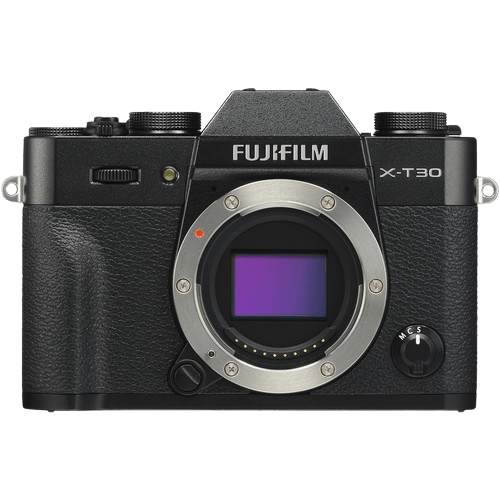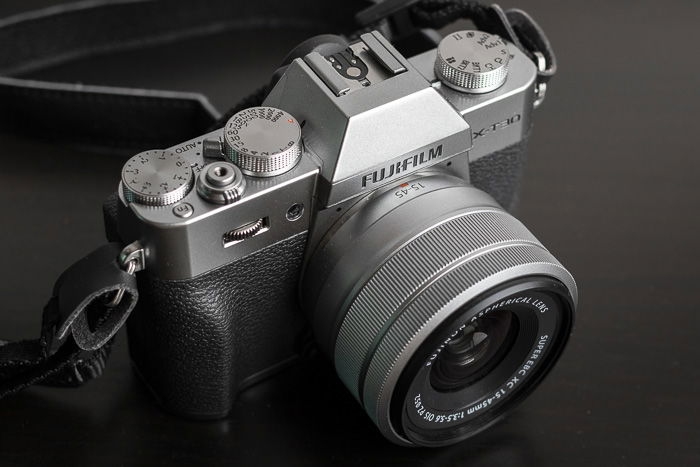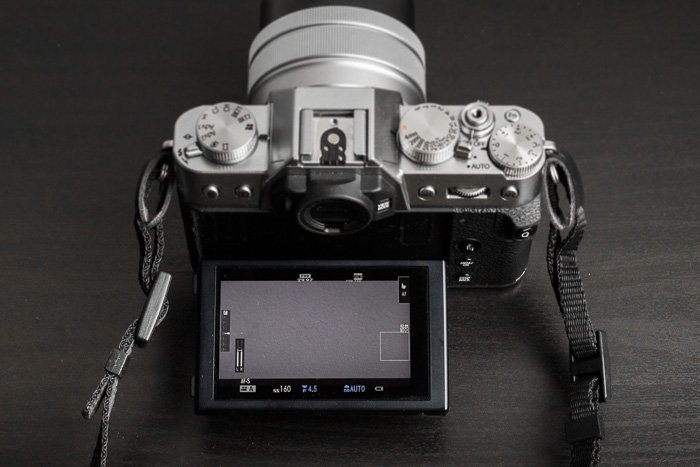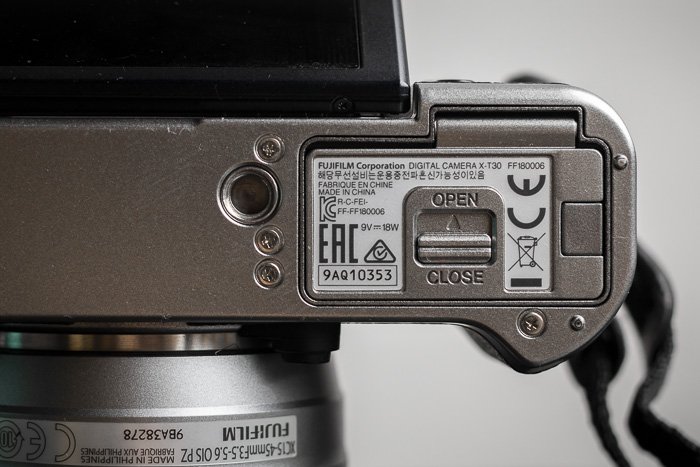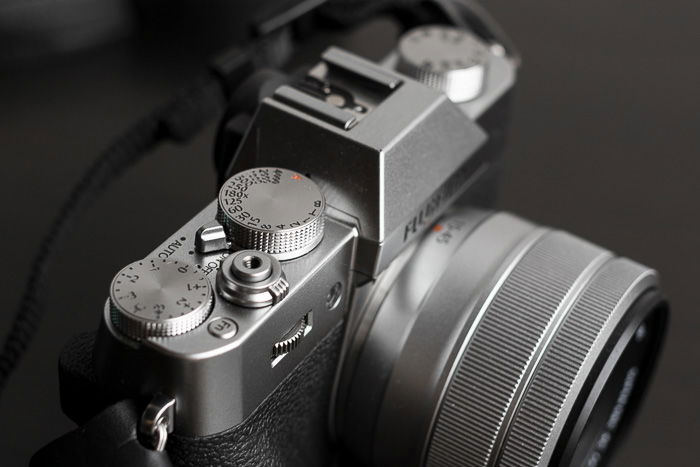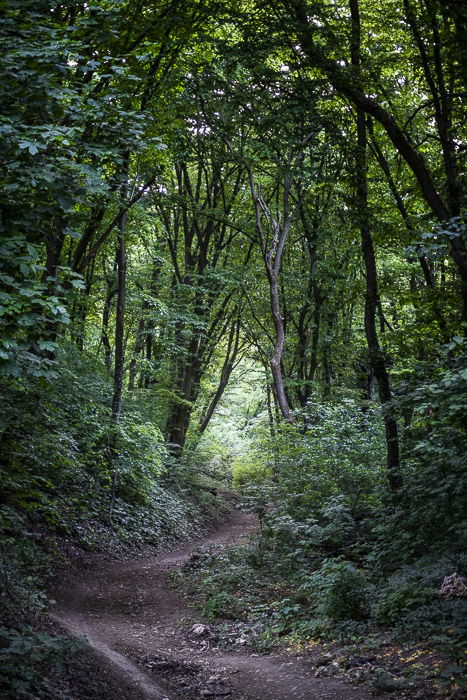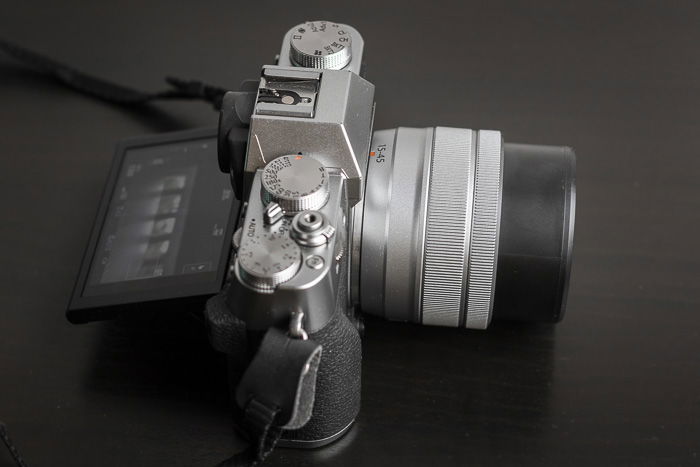But can it deliver thoroughly modern results from its deliberately retro body? Take a look at this review to see just how good the Fujifilm X-T30 is in today’s crowded market.
Fujifilm X-T30 Overview and Specifications
It has a small, retro-style body, built from decent materials. It houses a 26MP APS-C sensor, excellent video features, great autofocus and can be highly customized. Lenses on the X-T30 are interchangeable. For this review, I picked up the 15-45mm kit lens, which turned out to be an unwise choice – more on that later.
Who Is the X-T30 For?
I can’t fully answer this question, as this is an interchangeable lens system. The qualities of the X-T30 make it an outstanding and highly economic choice for many types of shooting. It excels in travel photography, portraits, studio work, and casual shooting overall. In the category of midrange cameras, it’s a great choice for landscapes, nature, and street photography. Surprisingly, it’s fantastic in low-light videography. I would recommend considering this camera if you’re looking for:
High portability, A great sensor, Beautiful colours, Mirrorless construction, Excellent video features, Paired with a moderate price.
Key Features of the X-T30
The Sensor
The sensor in the X-T30 is borrowed from the X-T3, a camera that costs considerably more. It gives you a resolution of 26 megapixels, which is plenty for basically anything. Unlike most sensors, it’s color filter array is X-Trans rather than Bayer. This means that pixels are laid out in 6 by 6 blocks, not 2 by 2. In this different layout, pixels are arranged so that all lines (vertical and horizontal) include pixels of all three colors. This array makes an optical low-pass filter unnecessary by reducing moiré. As a consequence, the softening effects of low-pass filters are not present in the X-T30. The sensor is not stabilised. This disadvantage is compensated by the excellent stabilization in some Fujifilm lenses.
Low-light Performance and Dynamic Range
APS-C cameras today easily outperform full frame models from a few generations back. Long gone are the days when the key to low-light shooting was an expensive full frame DSLR (a step I had to take). The X-T30 is a very solid option in this respect, among the best in its category. I would feel very comfortable using it at ISO 6400, and 25600 if I really had to. In video mode, the scenes are contrasty and retain a lot of color data until ISO 12800. The footage looks better than that of Sony or Canon cameras in this price range and slightly higher. Its dynamic range at base ISO (200) is great, but not among the best. At higher ISOs, above 800 it becomes comparably better than most of its competition.
Autofocus and Burst
The X-T30‘s autofocusing system, while not market-leading in its class, is excellent. For anything except fast-paced action, it’s perfect. It’s an on-sensor phase-detection system, a solution which many modern cameras use. It pairs the speed of DSLRs with the accuracy of contrast detection. This results in very noticeable improvements over mirrorless cameras from a few years ago. Face detection is sensitive and reliable. Tracking is provided across the entire area of the sensor, which is a trait of most mirrorless cameras. Focus points can also be selected anywhere in the frame. A joystick (focus lever, as Fujifilm calls it) helps with quick adjustments. The autofocus system is overall snappy and precise. In video mode, it’s still nice, although a tiny bit slower. One of the strong selling points of the X-T30 is its burst shooting capabilities. With the mechanical shutter, it can shoot up to 8 frames per second. Turn on the electronic shutter and the performance switch, though, and you’ll get 30! An impressive number, for sure. And while this burst only lasts for a few dozen frames (a card limitation), it’s still very powerful. With autofocus enabled, it still goes up to 20fps. Thankfully, rolling shutter artifacts are very well controlled due to the quick sensor readout speed. You can comfortably shoot anything except very fast action with the electronic shutter.
Video Features
Many of the big brother X-T3‘s video features are included in the X-T30, too. They set this camera apart from much of its competition. If you’re sticking with the camera and nothing else, you can shoot 4K (UHS or DCI alike) at 30fps, 8-bit 4:2:0. This is the standard. But the bit rate of the X-T30 is much larger than in other cameras. You can crank it up to 200 Mbps. Files at this settings are packed with tonal data, it’s pretty much as good as possible at 8-bit. One thing I mentioned before is low-light video quality. It is awesome, far ahead of anything comparable cameras can produce. With an external recorder, you can actually further improve video quality and get 10-bit 4:2:2, a rare feature in this price range. Only the Panasonic G9 offers similar options. The X-T30 is also capable of shooting at 120fps in FullHD. As I mentioned, rolling shutter artifacts are extremely well controlled. This was an issue in the previous generation Fujifilm cameras but has been solved in both the X-T30 and the X-T3. There are limitations to shooting video with the X-T30, though. 4K recording is restricted to 10 minutes in one take. This is less than usual, most cameras only stop at 30 minutes. Another issue is overheating, which is not surprising in a camera so small as the X-T30. You shouldn’t really shoot for more than 10 minutes anyway, because the camera gets uncomfortably hot. This might explain the time restriction.
Body and Handling
The body of the X-T30 is made of aluminum. Much of it is covered is simple plastic, which looks rugged. But overall, it doesn’t feel particularly comfortable or solid. To be honest, I expected more. Competitor cameras are built slightly better. The X-T30 also lacks weather sealing, which is a standard in this category. It would’ve been nice to see it included. On the other hand, the X-T30 is perhaps the best-looking camera in this category. A flip-up screen is a welcome addition, but it only rotates on the horizontal axis. You can’t flip it out for shooting vertically or use it for vlogging. The electronic viewfinder is quick, its refresh rate is excellent at 100fps, or 60fps with power saving. Colors and contrast are not so impressive, but they’re tweakable. It’s still a very usable viewfinder, up there with the better of the competition. Battery life is rated 380 shots. During my test, I shot with it for a day, and it held up, with 10% still remaining at the end of a long hike. I wasn’t fully focused on shooting, though. In a more demanding context, consider getting a spare battery or two. The camera is chargeable via USB-C, or the battery can be charged separately with an adapter that’s not included in the base package. A single UHS-I SD-card slot shares the slot with the battery. This slot is not placed well. If you’re using a tripod (or any accessory that screws onto the bottom), you can’t open the door. The tripod mount is also off-center with the lens, which is not ideal. The grip on the right side, while not bad, is not comfortable for longer periods of time. It’s simply too small. Both of the problems above can be solved by getting an external grip, but this is not an ideal workaround. Overall, I feel that construction and ergonomics are the X-T30‘s largest weakness.
Controls
Fujifilm’s cameras are controlled differently than usual. Most cameras have a well-known mode dial with manual, program, and priority modes. Here, you can set all exposure parameters independently of each other at all times. On the X-T30, you have a fixed shutter speed dial on the top. ISO and aperture can be mapped to the two control dials on the back and front. So, to use the X-T30 in aperture priority mode, simply set your desired aperture, and set the shutter speed to A (Auto). Likewise, to use shutter priority, set your aperture to A on the lens, and set your desired shutter speed. A drive mode dial is located on the top, as well as an exposure compensation dial. All in all, if you chose so, the X-T30 gives you control of all exposure parameters on separate dials. There is also an “Auto” switch, that quickly lets you jump between fully automatic mode and your preset settings. In situations where you only have a second or so to react and don’t have your camera set up, this could be a lifesaver. Most of the back is occupied by the 3″ touchscreen. It’s great for touch focus, but I’ve found that touch functionality is not implemented well in general. You can’t use it in the menus, and it’s sluggish when reviewing images. Sadly, the 4-way controller is gone. Buttons and dials are fully customizable, you can set pretty much any function to them. You can access a quick menu by pressing a dedicated button. You can set up several such menus for different shooting occasions. The shutter button is designed to accept a standard mechanical remote release cable. This makes it easier and cheaper to find such cables, as all you need is a non-electronic cord. The X-T30 also accepts digital, programmable releases, though. Connectivity is great. Bluetooth and Wi-Fi connection can be used to transfer images and to control the camera remotely.
Film Simulations and Color
Fujifilm’s signature feature is their film simulations. They are basically color and tone calibration profiles that (very faithfully) emulate the look of some popular film types. Many photographers love them, and they are truly great. They only apply to JPG files and video. But if you shoot RAW, don’t worry. Even RAW colors are excellent, they hardly require any tweaking to get to perfection.
What I Loved About the Fujifilm X-T30
The most important thing I truly liked in this camera is actually the results I was getting from it. Sharpness (with the 15-45 kit lens), dynamic range, colors, and tones are fantastic, especially for a camera this size. It’s also a very versatile, yet compact camera with intuitive controls. I can easily imagine it becoming a popular choice for a wide range of photographers.
What I Wish Was Different
While it might be an advantage to some people, I definitely wish the X-T30 was a bit larger and sturdier, and here’s why. If you want a small, compact camera, you won’t achieve with the X-T30 anyway. I could choose Fujifilm’s own excellent X100F or X100V, or the fantastic Ricoh GR III for that. For the X-T30, I have to use a bag by all means. The bag can fit a slightly larger camera body. That could include a larger grip, a tripod mount that is actually centered, a larger battery and more. If I use a better zoom lens than the 15-45mm, the package is quite large anyway. With the same features, it wouldn’t make a difference in price. If we look at Fujifilm’s lineup, there’s simply no such camera in there. The X-T30 should have been made more comfortable, perhaps larger.
A Word on Lenses
I used Fujifilm cameras in the past with fairly expensive zoom lenses, namely the XF 18-55mm f/2.8-4 and the fantastic XF 16-55mm f/2.8. So, for this review, I wanted to try something different. I chose the cheapest kit lens available, the 15-45mm powerzoom. My experiences with it are ambivalent. On one hand, its image quality is excellent for such a small and cheap optic. Its stabilization module also does the job very well, in part making up for the lack of such in the camera. But in every other aspect, it’s forgettable. Its build quality is perhaps the worst I’ve ever touched. The powerzoom motor is loud, slow, and drains the battery. I’d argue it’s completely unnecessary. Also, there is no focal length indication, which is a deal-breaker for me. The lens is small when not used, but as soon as you turn on the camera, it protrudes forward. The shooting experience with it is similar to a compact zoom camera from 15 years ago. So, I definitely recommend going for the 18-55mm lens if you plan on buying a kit lens. It’s more expensive and larger, but its advantages are worth that.
Alternatives to the Fujifilm X-T30
There are a number of alternatives to the X-T30, some of which I will more thoroughly review in the upcoming months. The Sony A6400 shares many traits, including a similar sensor and identical price. Its autofocusing system is the best in its class. 4K recording is not restricted with any time limit, but not as high quality. The Nikon Z50 is an excellent choice with great ergonomics and user experience, but the Z ecosystem lacks an extensive lens palette. The Panasonic G9 is a highly capable hybrid camera for both video and stills, especially action and wildlife. The Canon EOS M6 MkII has a 32MP sensor, a fantastic autofocusing system and surprisingly great ergonomics in a tiny body. Another Canon, the EOS RP has a full frame sensor and a bunch of effectively adaptable EF lenses available.
Our Verdict
If you value image quality over construction, I definitely recommend the X-T30. If I’d have to choose a field it best suits, I’d say it’s portraiture. But the X-T30 is a great choice for many other types of photography, for example, travel. It remains highly compact and portable while not sacrificing a lot on the quality side.
Scores
